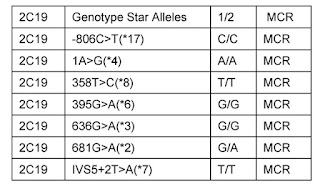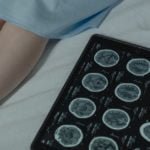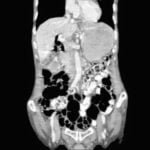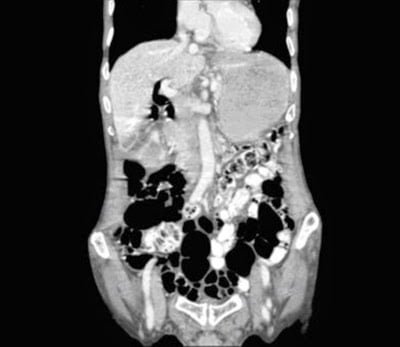
Case of the Month : How did his stomach polyps disappear?
Clinical scenario:
Evaluation :
He was evaluated on outpatient basis. He had haemoglobin of 14 g/dl with normal leucocytic count and normal platelet count. He had normal liver and kidney function tests. Serum amylase was within normal limits. Abdominal ultrasound showed a normal size of the liver with its normal echo texture. There were no gall stones, the common bile duct was normal and other abdominal viscera were also normal.The patient underwent upper gastrointestinal (GI) endoscopy which revealed a normal esophagus and a small hiatal hernia. There were multiple polyps in the antral area, each around 1 cm (Figure 1).
 |
| Fig 1 Multiple polyps in antrum of stomach |
A biopsy was taken from these polyps and a Campylobacter-like organism (CLO) test was also done. The patient’s biopsy (Figure 2) revealed evidence of chronic gastritis with no H. pylori activity. The polyp was adenomatous with no features of malignancy. His serology for H. pylori was
 |
| Fig 2 Histology of the Polyp |
negative.
.Proton pump inhibitors were stopped and upper GI endoscopy was repeated after 4 months (Figure 3). There was almost disappearance of the antral polypoidal lesions.
Repeated histology of the antral area showed complete regression of the polyp with mild gastritis and no H. pylori .No H pylori was grown after culture. The patient
 |
| Fig 4 Polyps cleared after PPI were stopped |
was given reassurance and symptomatic treatment. He is doing well and is following our clinic . The polypoid lesions were attributed to prolonged PPI usage and a CYP gene analysis (Table 1) was done.
 |
| Table 1 CYP2C19 Sequence genotype of the index case |
The index case was found to have one copy of the gene encoding enzyme with normal activity and another copy coding for inactive enzyme.
He was thus an intermediate metabolizer of the drug (Tab. Esomeprazole).
This may have led to increased levels for prolonged periods and subsequent polyposis in antral area due to hypergastrinemia
Teaching message :
Prolonged PPI therapy leads to Gastric polyposis and prolonged PPI therapy must be avoided .It is usually not required.
Further reading click the link :Complications of long term PPI use
Join the mailing list!
Get the latest articles delivered right to your inbox!







